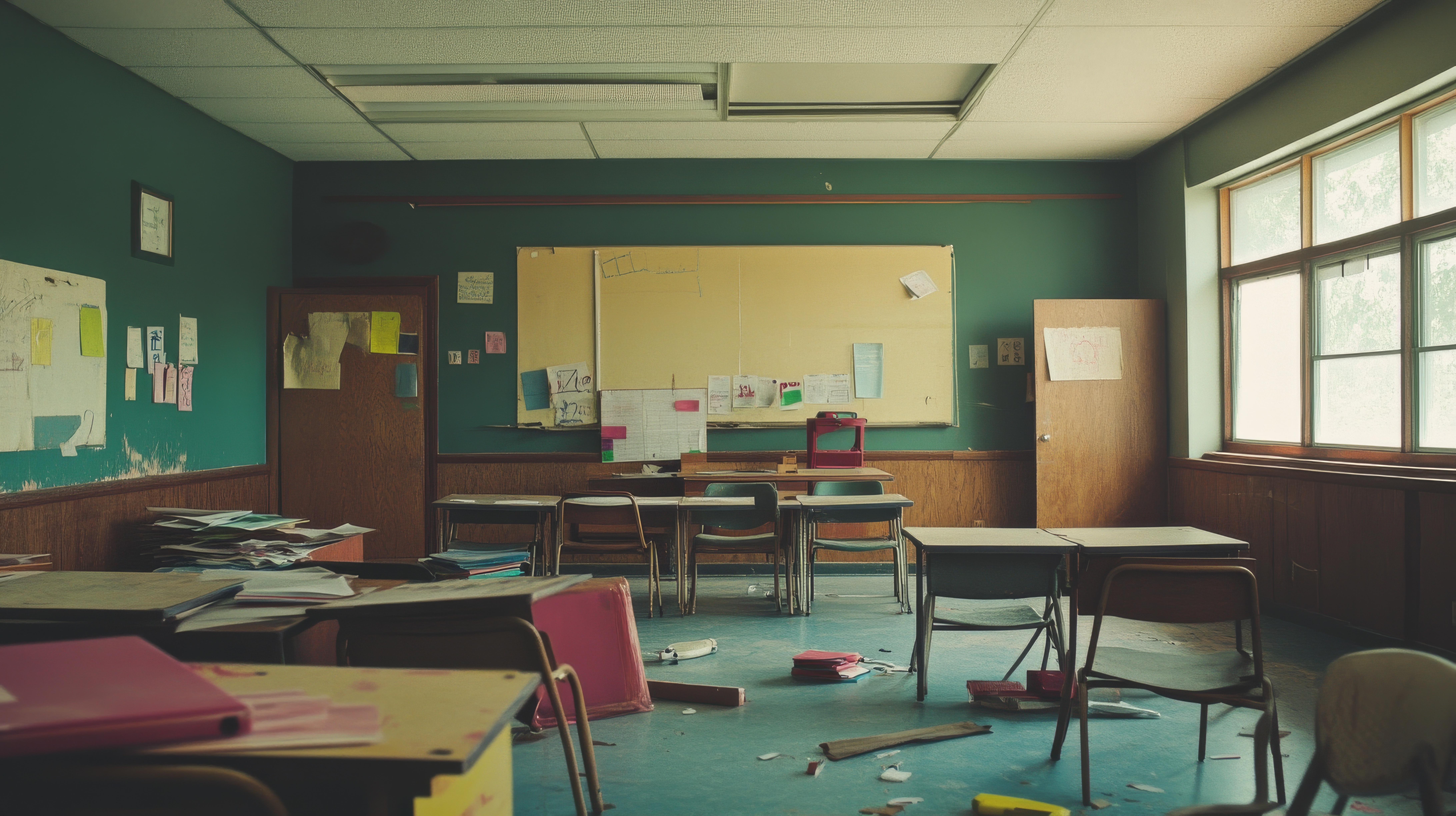What happens when the safest spaces for a child become the source of unimaginable harm? Child sexual abuse is a deeply intricate and devastating issue that tragically impacts children in every community, regardless of their background. This post aims to provide crucial understanding by clearly defining child sexual abuse, outlining its different manifestations, revealing its disturbing prevalence, and shedding light on the profound and enduring effects it has on those who survive this trauma.
Definition
Child sexual abuse involves any sexual activity between a child and an adult, adolescent, or older child. This abuse can range from direct physical contact to non-physical exploitation, and it occurs when a more powerful individual uses their authority, age, or trust to engage a child in sexual acts. It is essential to distinguish child sexual abuse from age-appropriate sexual curiosity or exploration among children. While the latter typically involves mutual engagement and limited understanding, abuse is defined by coercion, manipulation, or force by someone older or in a position of power.
Types of Child Sexual Abuse
Sexual abuse can take many forms and is typically categorized into two primary types: touching and non-touching abuse. Touching abuse includes acts such as fondling, forced sexual activity, sexualized games, or genital contact with or without penetration. These direct physical interactions are often traumatic and can leave lasting emotional and physical scars.
Non-touching abuse is equally harmful and includes actions such as exposing children to pornography, voyeurism, sexualized photography, online exploitation, or grooming. It also includes human trafficking and coercion through digital means. These forms of abuse exploit a child’s vulnerability and can often go unnoticed without vigilant prevention and intervention.
Prevalence and Statistics
The scope of child sexual abuse is widespread and alarming. In the United States, a case of child sexual abuse is substantiated approximately every nine minutes. Each year, over 65,000 cases are confirmed, representing only a portion of the actual instances, as many go unreported. Research shows that 1 in 4 women and 1 in 13 men experienced sexual abuse during childhood. These numbers reveal a critical public health crisis that affects individuals, families, and entire communities.
Long-Term Impacts
Child sexual abuse can profoundly affect a person’s health, relationships, and quality of life for years or even decades after the abuse has ended. The impacts span physical, emotional, social, and economic domains, making this one of the most damaging forms of trauma a child can experience.
Physical and Mental Health Consequences
Survivors often face long-term health issues that disrupt daily life. These may include post-traumatic stress disorder (PTSD), anxiety, depression, and panic disorders. Physical symptoms can range from chronic pain and gastrointestinal issues to cardiovascular disease and immune dysfunction—often linked to prolonged stress exposure.
Behavioral and Emotional Effects
Childhood sexual abuse frequently results in emotional dysregulation, low self-esteem, and self-blame. Survivors may engage in risky behaviors, such as unprotected sex or substance abuse, as coping mechanisms. Many also experience intrusive memories or flashbacks, leading to heightened stress in academic or professional settings.
Impact on Relationships and Social Development
Trust and intimacy issues are common among survivors, making it difficult to form and maintain healthy relationships. Children who experience abuse may isolate themselves, struggle with peer interactions, or find it difficult to confide in others. As adults, they may continue to face barriers in romantic relationships and social connections.
Academic and Career Challenges
The cognitive and emotional toll of abuse often impairs concentration, motivation, and attendance, leading to lower academic performance. Over time, these setbacks can result in limited educational opportunities and employment instability. Anxiety, panic attacks, or triggers in professional settings may also impact job retention and advancement.
Increased Risk of Harmful Outcomes
Survivors of child sexual abuse are at significantly higher risk for substance use disorders, suicidal ideation, and suicide attempts. Many report unplanned pregnancies and exposure to domestic violence, further exacerbating cycles of trauma. Without proper support, these outcomes may compound, leading to lifelong consequences.
Preventing Child Sexual Abuse
Preventing child sexual abuse requires coordinated efforts at every level of society. The following sections outline both community-based strategies and individual actions that can help build safer environments for children and reduce the incidence of abuse.
Community and Organizational Efforts
Preventing child sexual abuse requires collective action at both the community and institutional levels. Organizations must establish comprehensive child sexual abuse (CSA) prevention policies that prioritize safety, transparency, and education. Community leaders and educational institutions should work together to support victims, educate families, and train staff to recognize warning signs.
Programs such as Darkness to Light offer effective training for adults to prevent, recognize, and react responsibly to CSA. Partnerships with such initiatives help embed prevention into everyday practices, creating environments where children feel safe and protected.
Individual Actions
Every individual has a role to play in preventing child sexual abuse. Learning to identify the signs of abuse—such as sudden behavioral changes, regression, fear of specific adults, or unexplained injuries is critical. Adults should also educate children on body safety, boundaries, and how to report uncomfortable situations.
Equally important is the responsibility to act. If abuse is suspected, it must be reported promptly to the appropriate authorities. Timely reporting can stop ongoing abuse and initiate interventions that protect and support the child.
Recognizing and Reporting Child Maltreatment
Early detection and reporting of child maltreatment are critical to safeguarding children. The following section provides an overview of signs to watch for, the importance of early intervention, and resources available for proper response and support.
Recognizing maltreatment requires awareness of both physical and behavioral indicators. Child maltreatment includes not only sexual abuse but also physical abuse, emotional abuse, and neglect. Early signs may be subtle—withdrawal, sudden academic decline, aggression, or poor hygiene but they can be critical red flags.
Early intervention is vital in mitigating long-term consequences. Adults working with children, especially educators, healthcare providers, and community volunteers—should undergo training on how to respond effectively. Free online modules, such as those offered by child welfare organizations and professional networks, can equip individuals with the knowledge to report and respond appropriately.
Child Maltreatment and Its Broader Impact
Child maltreatment goes beyond individual cases of abuse; it has widespread consequences for physical, emotional, and societal well-being. The following sections explore the different types of maltreatment, associated health risks, and the long-term cost burden on society.
Types of Maltreatment
Child maltreatment encompasses various harmful behaviors, including physical, emotional, and sexual abuse, as well as neglect. Each form of maltreatment can have a distinct but equally profound impact on a child’s development and well-being. Neglect, often overlooked, is particularly dangerous as it involves a consistent failure to meet a child’s basic needs—nutrition, supervision, emotional support—which can severely hinder physical and emotional growth.
Associated Risks and Costs
The risks associated with child maltreatment are significant and far-reaching. Children who experience abuse are more likely to struggle academically, face chronic health problems, and require intensive medical and mental health services. On a societal level, the economic costs—stemming from healthcare, social services, law enforcement, and lost productivity—are immense. Early intervention not only benefits individuals but also reduces long-term public expenditures.
Effects of Harsh Physical Punishment
Harsh physical punishment, while not always classified as abuse, has been linked to increased behavioral issues and mental health struggles in children. Studies show that frequent or severe corporal punishment correlates with higher levels of aggression, depression, anxiety, and antisocial behavior. These findings underscore the need for non-violent, trauma-informed approaches to discipline that foster respect and emotional regulation rather than fear.
The ACE Study and Its Relevance
The Adverse Childhood Experiences (ACE) Study has reshaped our understanding of how early trauma affects long-term health. The following section discusses the role of child sexual abuse as a key ACE and its lifelong impact on survivors’ physical and emotional health.
Origins and Purpose of the ACE Study
The ACE Study, initiated by the Centers for Disease Control and Prevention (CDC) and Kaiser Permanente, aimed to explore the relationship between childhood adversity and long-term health outcomes. The study surveyed over 17,000 individuals about their exposure to ten types of adverse experiences, including abuse, neglect, and household dysfunction. The results confirmed a strong correlation between ACEs and a higher likelihood of chronic diseases, mental illness, and early mortality.
Child Sexual Abuse as a Critical ACE
Among all ACEs, child sexual abuse is one of the most traumatic. It involves a severe breach of trust and personal boundaries and can lead to physiological changes in brain structure and hormonal regulation. Survivors often carry elevated cortisol levels due to chronic stress, which compromises immune function and increases inflammation. These changes can contribute to conditions such as heart disease, diabetes, and autoimmune disorders.
Lifelong Behavioral and Social Effects
The consequences of ACEs extend beyond physical health. Survivors of child sexual abuse often face difficulties in education, employment, and interpersonal relationships. High ACE scores are linked with increased rates of substance abuse, incarceration, homelessness, and risky sexual behavior. These outcomes are not a reflection of moral failing but rather responses to unresolved trauma.
Public Health and Policy Implications
The ACE Study transformed child abuse from a solely social or legal concern into a major public health issue. Understanding the long-term implications has prompted shifts toward trauma-informed care in education, healthcare, and social work. Professionals are now encouraged to screen for ACEs and apply interventions that focus on healing and resilience rather than punishment.
The Path Forward: Prevention and Support
Addressing ACEs starts with early identification and a coordinated response. Schools, healthcare providers, and community organizations must work together to offer trauma-informed support to children and families. Raising awareness and investing in accessible mental health care are key to reducing the long-term effects of ACEs, including child sexual abuse.
By applying the insights from the ACE Study, professionals can help survivors build resilience and prevent future abuse through education, policy, and compassionate care.. Early childhood education, parental support programs, accessible mental health care, and community-based prevention initiatives can reduce the incidence and impact of child sexual abuse. Raising awareness about the significance of ACEs empowers families, professionals, and policymakers to invest in preventative strategies and long-term support services.
Understanding Sexual Misconduct
Sexual misconduct takes many forms and can occur in schools, workplaces, humanitarian settings, and online. The following sections define various types of misconduct, distinguish between key terms, and provide real-world examples to illustrate how abuse of power plays out in different contexts.
Definitions and Categories
Sexual misconduct encompasses a range of inappropriate behaviors, including sexual harassment, sexual assault, and sexual exploitation and abuse (SEA).
Sexual harassment refers to unwelcome sexual conduct—verbal, visual, or physical—that interferes with an individual’s access to education, employment, or services. Sexual assault involves non-consensual sexual contact or acts performed through force, intimidation, or when a person is unable to consent.
Sexual exploitation and abuse (SEA) involve the abuse of power or trust for sexual gain. This includes the coercion of vulnerable individuals, such as students or refugees, into sexual acts in exchange for resources, services, or protection.
Key Differences
While all forms of sexual misconduct are violations of personal autonomy and safety, they differ in context and dynamics. SEA typically targets vulnerable communities and often occurs in humanitarian or institutional settings, where power imbalances are pronounced. Sexual harassment is more common in workplaces and educational institutions, involving peers, supervisors, or faculty.
Despite these differences, both SEA and sexual harassment involve abuse of authority, breach of trust, and lasting harm to victims. All forms of sexual misconduct are unacceptable and require strong institutional responses.
Examples of Sexual Misconduct
Sexual misconduct may take many forms. In quid pro quo situations, a person in authority offers benefits such as grades, promotions, or access to services—in exchange for sexual favors. Hostile environments can develop when repeated or severe sexual behavior makes a setting unsafe or uncomfortable. Other examples include transactional sex, coercion through blackmail, or sharing explicit images without consent. These acts not only violate legal standards but also erode trust and safety in learning and professional environments.
Reporting and Accountability
Holding perpetrators accountable and ensuring victim protection are essential components of abuse prevention. The following sections explain how and when to report suspected abuse, and outline the responsibilities that organizations have in responding to violations and ensuring a safe environment.
How and When to Report
Timely and transparent reporting is critical in preventing further harm and ensuring justice for survivors. Any suspicion of abuse or misconduct should be reported immediately to the appropriate authorities, whether that’s school administration, child protection services, or legal entities. In international contexts, reports may be directed to oversight bodies like the UNHCR Inspector General Office.
Mandatory reporters, including teachers, healthcare providers, and social workers, are legally required to report suspected abuse. However, any adult who suspects harm has a moral and ethical obligation to act.
Organizational Responsibilities
Organizations have a duty to maintain safe environments and enforce policies that prevent and address misconduct. In the United States, Title IX mandates that schools and universities have clear procedures for handling sexual harassment and assault. International organizations and humanitarian agencies are similarly bound by codes of conduct and disciplinary frameworks.
Violations of these policies must result in appropriate consequences, and victims should be protected from retaliation. Providing confidential reporting channels, supportive services, and transparent follow-up processes are essential components of institutional accountability.
Community Action and Resources
Community engagement and education are powerful tools for preventing child sexual abuse and supporting survivors. The following sections highlight initiatives and training opportunities available to individuals and organizations seeking to take part in prevention efforts.
Join the Prevention Action Network
The power to prevent child sexual abuse lies not in isolation, but in collective action. In North Carolina, the Prevention Action Network stands as a powerful example, uniting individuals and agencies under a shared commitment to end this devastating crime. Engaging in this vital work whether by volunteering your time, expanding your knowledge, or forging organizational partnerships amplifies a crucial message: safeguarding our children is not a task for a few, but a shared responsibility that demands our unified effort.
Explore Training and Tools
Numerous organizations offer free, accessible training and tools to empower communities. Darkness to Light provides evidence-based courses on child abuse prevention and response. Local YMCAs, schools, and child advocacy centers often offer in-person workshops, resource kits, and ongoing support.
These tools equip adults with the skills and confidence to recognize red flags, respond to disclosures, and create safer environments for all children.
This blog is part of an ongoing effort to educate, prevent, and respond to child sexual abuse and sexual misconduct. For more resources, training opportunities, or to report abuse, contact your local child protective services or visit national advocacy sites like Darkness to Light or RAINN.





